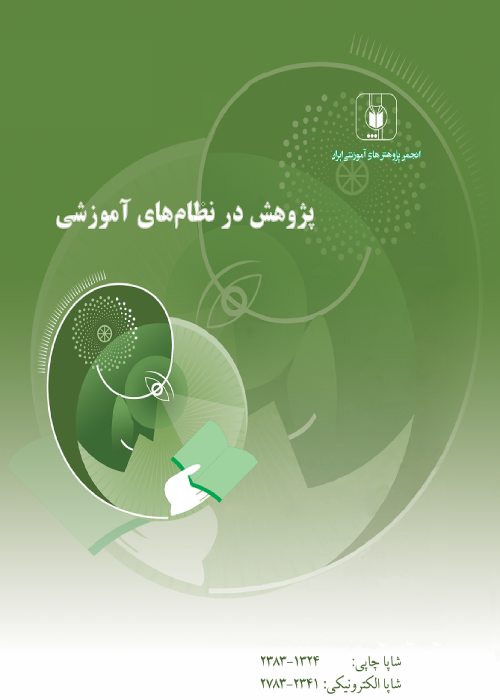Presenting a Learning Organization Model in Primary Schools in Tehran
Author(s):
Article Type:
Research/Original Article (دارای رتبه معتبر)
Abstract:
In this research, a model of learning organization for elementary schools in Tehran has been presented. The statistical population of the present study consisted of 30 people (5 women and 25 men) from the experts who were selected through a sampling of targeted target snowball. A sample of 30 experts in the field of educational science were selected. The methodology of the present study is applied in terms of objectives, in terms of qualitative and qualitative data and in terms of the nature and type of data study of the foundation. Through interviewing and finally using a narrative theory, a native pattern will be finalized. The measurement tool of the present study is using a form An organized interview in which the pattern, dimensions, components and indicators of the learning organization model are set. At first, the kidneys and patterns were found and the studies and theories were examined and then counted by open index coding. After defining the core encoding for 30 field experts to make selective coding and using the Delphi fan and Deep interviews reached theoretical saturation. The validity and validity of the organized interview form have been gained through the Delphi technique. The method of data analysis is qualitative and the first finding of the present study indicates that the optimal model of the learning organization for the elementary schools of education in Tehran is. This model is composed of 140 indicators that can be a moderator of teachers and principals in learning schools. The second finding of the present study shows that the model is composed of what dimensions. This model consists of 5 dimensions, which are the priority, including individual dimension, group dimension, organizational dimension, management dimension and environmental dimension. In the third finding, the components of the model are 17 items that include individual capabilities, mental patterns, learning Group, Communication Skills, Knowledge Sharing, Common Perspective, Organizational Culture, Organizational Structure, Organizational Climate, Organizational Values, Organizational Evaluation, Leadership, System Thinking, Knowledge Audit and Content Auditing, Program Planning, Human Resources and Environmental Culture, Laws and Regulations, Technology, economic and political factors. The fourth finding of the present study is that each What are some of the components of the above pattern?
Keywords:
Language:
Persian
Published:
Quarterly Journal of Research in Educational Systems, Volume:12 Issue: 40, 2018
Pages:
147 to 162
magiran.com/p1872042
دانلود و مطالعه متن این مقاله با یکی از روشهای زیر امکان پذیر است:
اشتراک شخصی
با عضویت و پرداخت آنلاین حق اشتراک یکساله به مبلغ 1,390,000ريال میتوانید 70 عنوان مطلب دانلود کنید!
اشتراک سازمانی
به کتابخانه دانشگاه یا محل کار خود پیشنهاد کنید تا اشتراک سازمانی این پایگاه را برای دسترسی نامحدود همه کاربران به متن مطالب تهیه نمایند!
توجه!
- حق عضویت دریافتی صرف حمایت از نشریات عضو و نگهداری، تکمیل و توسعه مگیران میشود.
- پرداخت حق اشتراک و دانلود مقالات اجازه بازنشر آن در سایر رسانههای چاپی و دیجیتال را به کاربر نمیدهد.
In order to view content subscription is required
Personal subscription
Subscribe magiran.com for 70 € euros via PayPal and download 70 articles during a year.
Organization subscription
Please contact us to subscribe your university or library for unlimited access!


